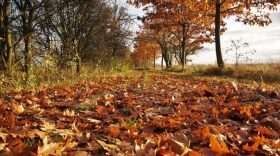Jack Greene
Wild About Utah Contributor-
Consider the leaf, these lovely little solar collectors! How can any device imagined by the human brain collect light energy from the sun and convert it to food and oxygen while sequestering carbon?
-
Fall bird migration is well underway! Our winter residents and migrating drop-ins are now beginning to populate our feeders and lower landscapes.
-
I stood mesmerized by the beauty of the tranquil setting and glowing cottonwoods dwarfed by rainbow colored cliffs. The spell was suddenly shattered by a large aquatic mammal swimming nearby.
-
Certain plants were considered sacred by many native tribes. Chokecherry made the list. This versatile plant was highly prized for food, medicine, implements, and building material.
-
I’m a lake person born in the Great Lakes region, land of Hiawatha’s “shining big sea waters.” Fishing, hunting, swimming, and boating were at the center of our culture.
-
Five needle pines- I love them! It was the stately eastern white pine that introduced me to these trees of the five needle clan in my early years in Wisconsin & Michigan.
-
Forests are beyond amazing! As a field ecologist for the U.S. Forest Service, and chairing the Smithfield City Tree Committee, their branches and roots have penetrated deep into my heartwood!
-
A bird of the prairie and countryside, the western meadowlark releases songs synonymous with spring grasslands flush with balsam root, lupine, death camas, larkspur, prairie smoke, and wind tossed grasses that shimmer in morning sun.
-
When I began Nordic skiing some 40 years ago, my Bonna laminated wood skies were coveted. I miss their natural beauty and high performance. Now, they sit in a corner, replaced by a light weight, wax free pair. Somethings lost, something’s gained.
-
Waldo was not a cartoon, but a genuine lady bobcat and Weber State College mascot, a gorgeous animal that stole my heart!











